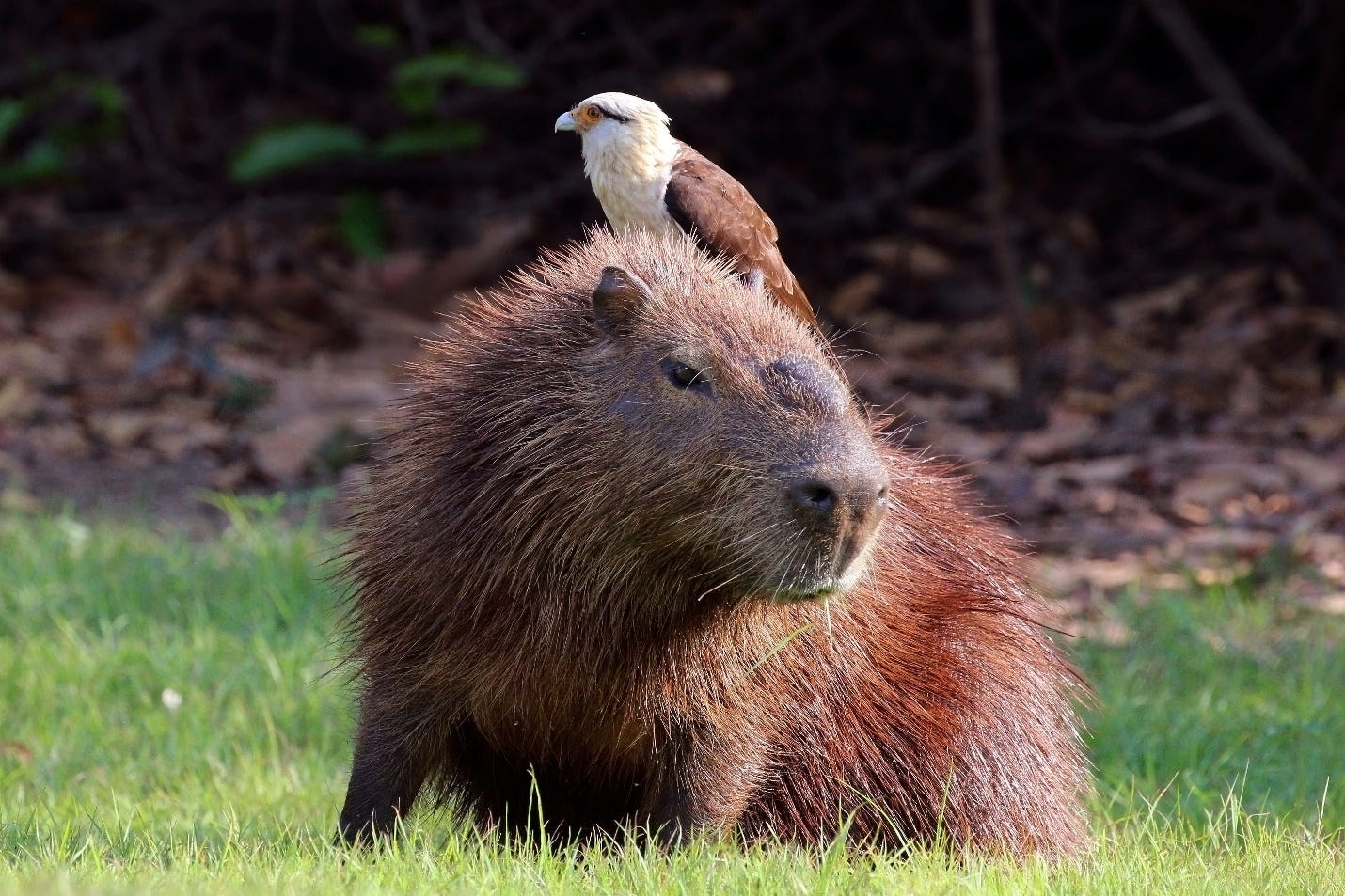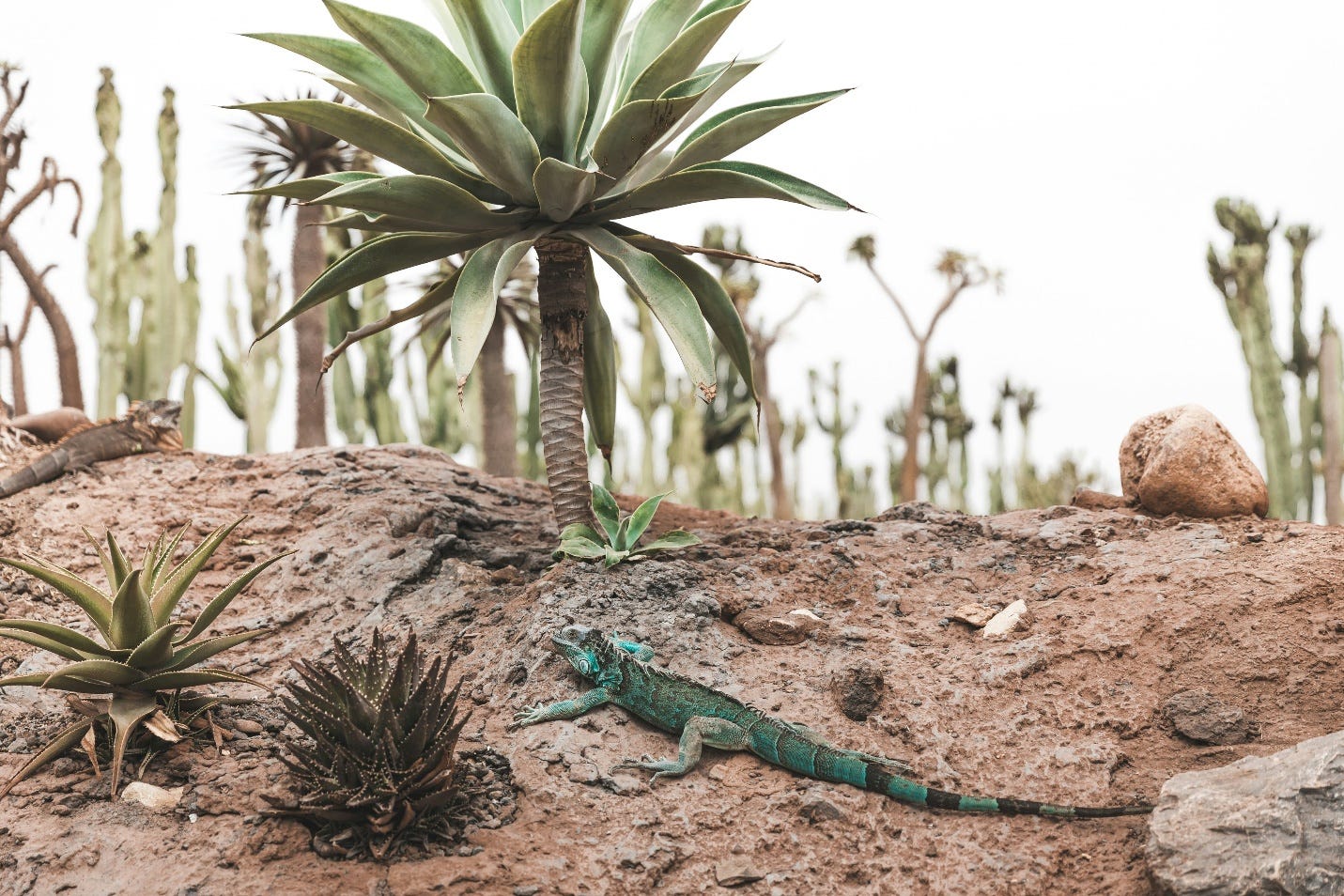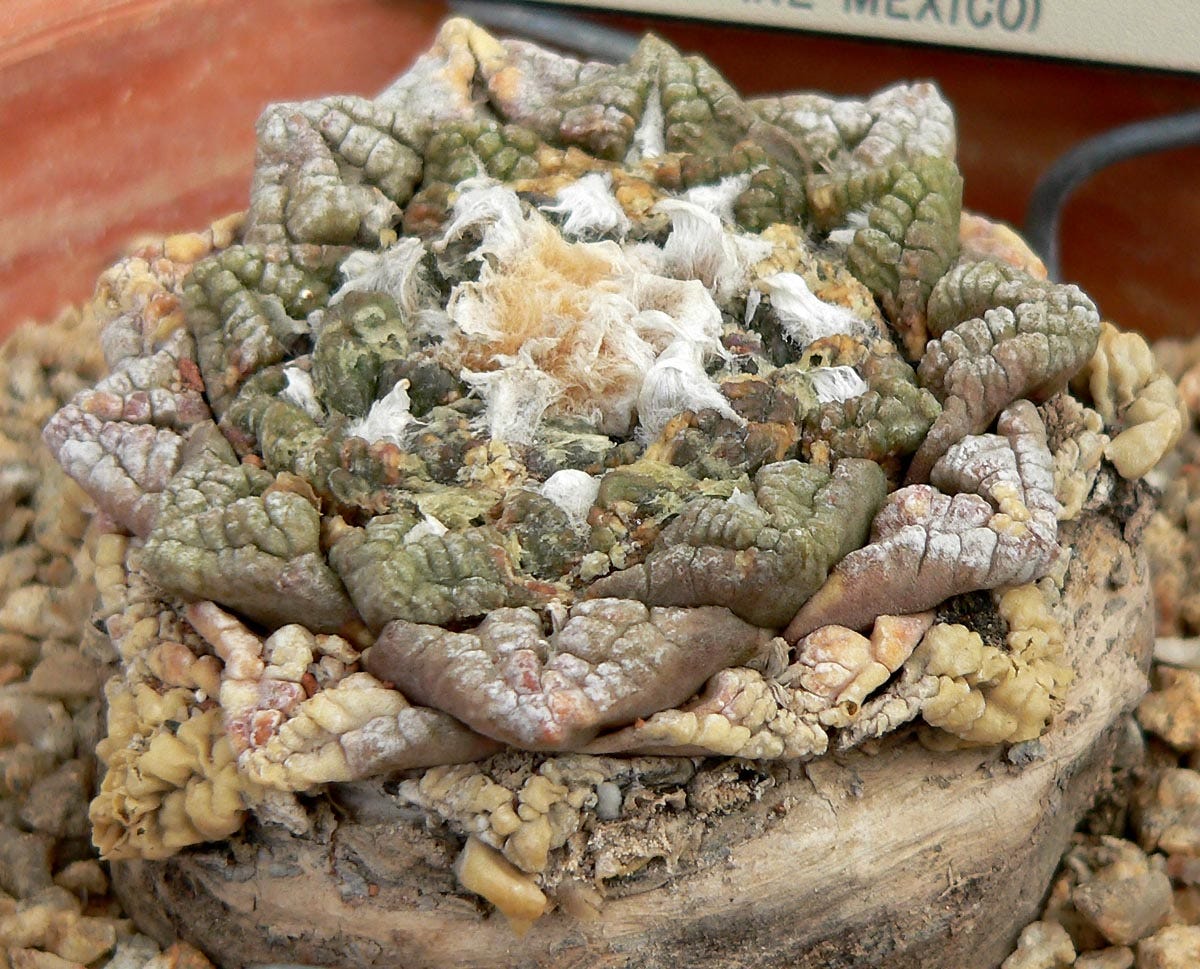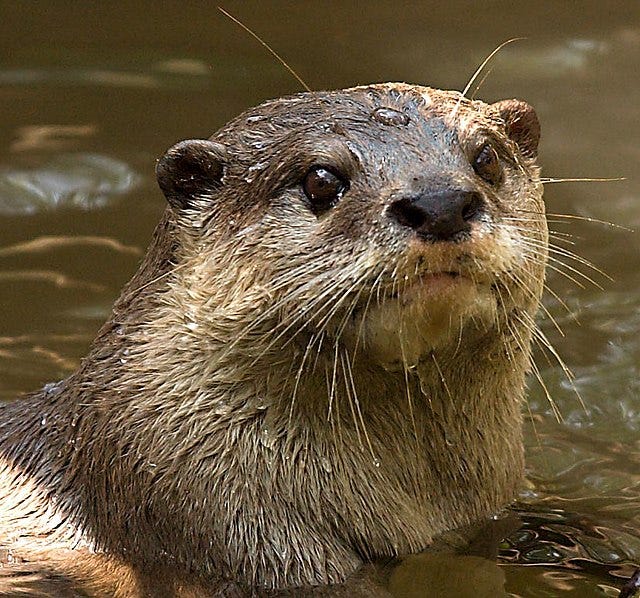Have People Seriously Lost Their Minds?
Ants, Cacti and Giant Rodents: Time to Dial Back the Crazy
Ant Fever:
This past April four people in Kenya pled guilty to attempted smuggling of thousands of live ants out of the country. According to reports, two Belgians, a Vietnamese and a Kenyan plotted to smuggle 5,000 queen ants packed in 2,244 test tubes to Europe where the little critters were to be sold to ant collectors across Europe and Asia.
It turns out there is a thriving market in exotic ants for people who collect them as pets. There are multiple ant dealers on the web, but you know what, I’m not going to name them here. I will tell you that some of these queen ants are priced at US$226 per queen when they’re available. If you feel drawn toward collecting exotic ants (or any other insect), I leave you to it and you should move along.
Reportedly, the two Belgian lads, both 19 years old, were staying at a guest house in Kenya where they assembled the queen ants of various types including the messor cephalotes species, also known as the Giant African Harvester Ant, native to East Africa. The youths explained they collected the ants for fun and were unaware their actions were illegal, according to AP.
Kenya’s wildlife service said “Investigations reveal the test tubes have been designed to sustain the ants for up to two months and evade airport security detection, including x-ray scanners. The suspects entered Kenya on tourist visas and . . . intended to smuggle the ants to high-value exotic pet markets in Europe and Asia, where the demand for rare insect species is rising.”
According to Wikipedia, people collect ants (and presumably other rare insect species) to study insect behavior and as pets.
Wikipedia also notes it is illegal to ship queen ants across U.S. state lines (with the of exception of the Pogonomyrmex occidentalis species), without a license or permit from state or federal authorities. I don’t know the reasoning behind the one exception, but let’s leave that question for another day.
From the perspective of Kenyan authorities, catching would-be insect smugglers is a form of biopiracy because it involves export of Kenya’s genetic resources without informed consent and in direct violation of law. Kenyan authorities also commented that arrest and conviction of the smuggling ring reflects a “trend to traffic lesser-known wildlife species.”
The Guardian quotes one on-line ant vendor who explained there are shows where ant collectors meet to compare species and housing. He continues “In today’s world, where most people live fast-paced, tech-driven lives, many are disconnected from themselves and their environment. Watching ants in a formicarium can be surprisingly therapeutic.”
Thousands of smuggled ants, hidden formicaria, international on-line dealers and meet-ups with other like-minded insect collectors. Just drink that in. To be clear, I mean think about it.
One Can Never Have Too Many Cacti:
Before we assume that exotic insect fans are alone in advancing environmental mayhem for peculiar private gratification, two Italian cacti smugglers were just convicted this past March of selling illegally-harvested plants from Chile.
These illicitly-harvested cacti are unique to the Atacama desert in Chili and are formally listed as “endangered.” The cacti were sent to Greece and Romania and then onward to Italy for sales to buyers in Europe, Asia and the U.S.
It is illegal under both Italian and international law to import the endangered plants yet the cactus smugglers harvested more than 900 plants. This isn’t an impulsive grab wrapping a plant or two among sweaters in one’s suitcase; it’s a business.
Cactus smugglers have also been caught trying to smuggle the cactus known as the “living rock” (Ariocarpus fissuratus) from Texas.
A Special Agent from the U.S. Fish & Wildlife Service was quoted in a story on the USFWS website as saying “Once I started working the case though, I found it both very interesting and absolutely shocking; reading through the correspondences between supplier and buyer, and learning how insatiable their desire is to get these plants. They will do whatever they can, and pay whatever they can. And they don’t just want one cactus. They want as many as they can get.” In one case involving seven individuals, law enforcement estimated they’d smuggled between 10,000-15,000 individual plants.
But Why, You Ask:
Researchers, as you might expect, have written books exploring the “need” to collect wildlife.
One writer theorizes people feel an internal sense of absence which drives them to collect the desired object, but the need for wholeness can never be fulfilled. “Desire is the entry point to analyze collectors’ practices of searching for, uprooting, and then smuggling endangered cactus species, further contributing to this taxa’s vulnerability.”
I’ll take a wild guess that the “love” exhibited in the illicit cactus world is probably much the same as the “love” in the illicit insect world.
In his book The Cactus Hunters: Desire and Extinction in the Illicit Succulent Trade, (University of Minnesota Press, 2023), author Jared Margulies explains:
“Collectors do not simply gather objects together; they engage in practices of classification, differentiation, and repetition. Collections are elevated from the mundane to the domain of the sacred. .. Many cactus collectors in Europe and the U.S., for example, are older cisgender men, and the masculinity, alongside self-affirmation, is key to understanding their cactus desires. Relationships between collectors and their cacti are emotionally charged and create spaces where they can navigate ambiguity, memory and loss.”
The author suggests the plants themselves also assert on their human collectors’ specific demands for care and emotional attachment.
I suspect the illegality, need for secrecy, shared underground community, rarity and vulnerability of the living thing and black market prices are all part of the thill.
I Must Have Playtime with Giant Rodents or Smuggled Otters:
And then we move to the cafes in Florida, Japan and likely elsewhere where human clients pay a fee to play with wild animals kept adjacent to coffee bars.
In the Florida coffee bar, humans pay fifty dollars to spend a half hour with two or three capybaras (dog-size rodents) to cuddle with them and feed them hay, kale and the like. Capybaras are wild animals native to South America. I’ll reserve judgment on the Florida café which is run by an animal rescue and rehabilitation center to fund their care for foxes, skunks, racoons and other wild animals and where the capybaras themselves live.

I have greater concern about the animal cafes in Japan. The Guardian ran a recent story reporting the otters in one Tokyo café have been linked genetically to wild populations taken from poaching hotspots in Thailand. These Asian small clawed otters are classified as “vulnerable to extinction” and their commercial trade was internationally banned in 2019.
The zeal for quality personal time and selfies with wild or endangered species is actually a growing trend.
One on-line travel agency will book reservations for you at Tokyo cafes variously specializing in hugging mini-pigs, owls, penguins, hedgehogs, and various types of birds. The agency will also book reservations for you at the Tokyo snake cafe where I trust visitors are not actually hugging the reptiles.
Come, Let Us Reason Together
Folks, let’s have a think, shall we?
On the positive side of the ledger, at least these collectors aren’t harvesting these critters for coats. (I don’t know what an ant coat or a cactus coat would look like.)
However, in all likelihood a fair number of the captured will die in transit. Those deaths are the byproduct of our need to “own” or possess something that never wanted or needed to be moved to distant foreign lands.
The point at issue here is the illegal collection of rare or unique species for private ownership as distinct from the historic collections found in public zoos, aquariums and botanical gardens. While the individual well-being of species in those settings also bears serious discussion, we’ll leave that for another day.
On the negative side of the ledger these fauna and flora have a role in the place from where they are being hijacked. The critters and plants may serve as food for other beings or help maintain the balance of an ecosystem.
For instance, those exotic ants from Africa collect and disperse grassland seeds and aerate soil. They also serve as food for other species including aardvarks, pangolins (another endangered species) and aardwolves.
The cacti in the Atacama desert are already threatened by climate change and mining. Where they are, they support insects that rely on their flowers, and those insects, in turn, support other animals. They are a critical part of a larger eco-system.
USFWS describes the cactus smugglers in Texas as strip mining the cacti for cash. “These plants take several decades to reach maturity. In a short period of time, one person can wipe out an entire population.” According to USFWS, one in three cactus species is threatened with extinction. Individual plants can sell for five figures.
In the wild, the otters maintain freshwater and mangrove swamps in Asia. To give you a point of comparison, under international treaties, these otters are listed in the same classification as elephant tusks.
Then there is the very real risk that captured creatures escape or are let loose in the foreign environment where they may become an invasive species.
Examples include Burmese pythons once bought as pets and then let loose in the Florida Everglades where they are estimated to number in the tens of thousands and kill off local animals including deer, foxes, possums and others.
North American raccoons were imported to Germany by the Nazis for fur farms and then let loose. According to The Guardian, raccoons are now all over Germany and spreading throughout Europe. Racoons can climb trees and eat bird eggs, bats, native amphibians as well as endangered seafood.
As for exotic ants, I have personally seen the giant ant hills in Kenya (some taller than people), and I assure you, you don’t want these ants getting a foothold (so to speak) in Manchester, Marseilles or Munich.

According to Wikipedia, the white garden snail was deliberately introduced in California. These pests harm gardens and crops and then humans respond by applying dangerous pesticides to fight them, potentially harming thousands of beneficial insects. Humans introduced the creature and then use dangerous chemicals to battle them.
There are enough unwanted critters making their own way to new lands such as the “murder hornet” from Asia hitching a ride to North America where it wipes out entire honey bee colonies. It’s pretty basic science to recognize that we need to avoid introducing invasive species as much as we can.
Then there’s the fact that those who patronize dealers in these smuggled goods, are directly contributing to wildlife trafficking.
While I am reluctant to criticize another person’s fascination with nature, would it be a fair ask that we watch films, read about the exotic species we love, and perhaps one day just visit them where they live? If we love these creatures or beings, shouldn’t we demonstrate our concern and respect by leaving them where they are?
I can’t help wondering whether the fascination with smuggled wildlife is actually a reflection that some of us prefer this hobby to spending time with other human beings.
Sources: apnews.com, fws.gov/story, Reuters.com, Salon.com, The Guardian, Wikipedia






Thank you for sharing this important information. It's greatly appreciated.
Thank you for sharing this. I had no idea - I am not surprised- but it is eye opening. I think this stems from a basic impulse in humanity to touch and see what we like or admire everyday. It can be a byproduct of love in a "love it set it free and see if it returns" kind of way. Or as humans tend to do, we can take it to extremes turning from fans to fanatical in a slippery slope downward spiral. And not being concerned to the consequences to others. We see it as personal and none of anyone else's business - we aren't harming the objects of desire. Sadly it's not as if animals or plants can give consent so if they thrive in the new environment it's ok, we're protecting them. Wow, this is great source for both love and horror stories. But it's actually real life and innate in all of us too which is sobering....